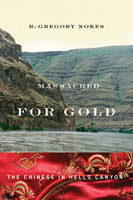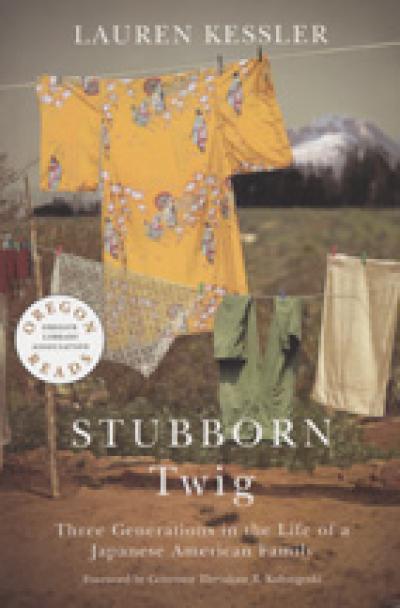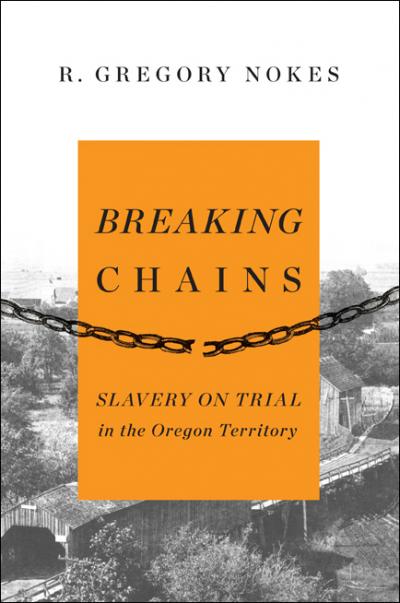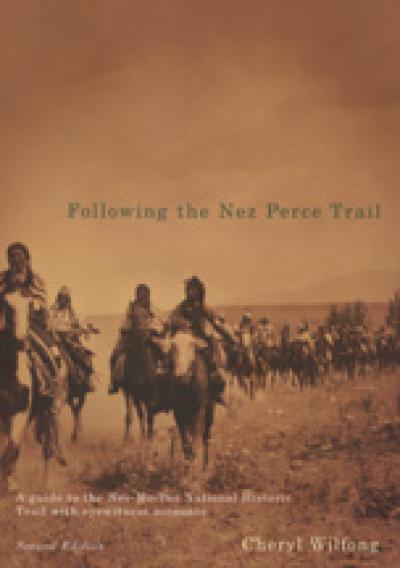
ISBN 9780870716362 (ebook)
Massacred for Gold
R. Gregory Nokes
In 1887, more than 30 Chinese gold miners were massacred on the Oregon side of Hells Canyon, the deepest canyon in North America. Massacred for Gold, the first authoritative account of the unsolved crime—one of the worst of the many crimes committed by whites against Chinese laborers in the American West—unearths the evidence that points to an improbable gang of rustlers and schoolboys, one only 15, as the killers.
The crime was discovered weeks after it happened, but no charges were brought for nearly a year, when gang member Frank Vaughan, son of a well-known settler family, confessed and turned state’s evidence. Six men and boys, all from northeastern Oregon’s remote Wallowa country, were charged—but three fled, and the others were found innocent by a jury that a witness admitted had little interest in convicting anyone. A cover-up followed, and the crime was all but forgotten for the next 100 years, until a county clerk found hidden records in an unused safe.
In bringing this story out of the shadows, Nokes examines the once-substantial presence of Chinese laborers in the interior Pacific Northwest, describing why they came, how their efforts contributed to the region’s development, and how too often mistreatment and abuse were their only reward.
About the author
R. GREGORY NOKES is the author of Breaking Chains: Slavery on Trial in the Oregon Territory and Massacred for Gold: The Chinese in Hells Canyon. He traveled the world as a reporter and editor for The Associated Press and the Oregonian. A graduate of Willamette University, he attended Harvard University as a Nieman Fellow. His reporting on the 1887 murders of more than thirty Chinese gold miners in Hells Canyon resulted in a formal designation of the site as Chinese Massacre Cove and was the basis for an Oregon Public Broadcasting documentary. Greg and his wife, Candise, live in West Linn, Oregon.
Read more about this author
Prologue 8Part One: The Dead 11
Chapter One: Tales of Murder 12
Chapter Two: “Adventurous Boys” 17
Chapter Three: Miles from Punyu 26
Chapter Four: Why They Came 32
Chapter Five: More Tales of Murder 39
Chapter Six: The Judge and “The Chinaman” 45
Chapter Seven: A Personal Journey 50
Chapter Eight: The Mon-Tung Camp 63
Chapter Nine: Two Investigations 66
Chapter Ten: “With Great Regret” 71
Chapter Eleven: Rock Springs and More 76
Chapter Twelve: “Deplorable in the Extreme” 82
Part Two: The “Innocent” 87
Chapter Thirteen: Vaughan Confesses 88
Chapter Fourteen: “Don’t Ask ... Don’t Tell” 98
Chapter Fifteen: A Story Changes 103
Chapter Sixteen: Behind the News 108
Chapter Seventeen: On a Merry-Go-Round 113
Chapter Eighteen: Claims for Corpses 117
Chapter Nineteen: A Kind of Trial 121
Chapter Twenty: Wanted: Horse Thieves 129
Chapter Twenty-One: Tightening the Screws 134
Chapter Twenty-Two: A Second Confession 137
Chapter Twenty-Three: Blooming Flour 140
Chapter Twenty-Four: Flight 144
Part Three: P.S. Keeping Secrets 153
Chapter Twenty-Five: The Secret Keepers 154
Chapter Twenty-Six: And Now, the Journal 167
Chapter Twenty-Seven: The Coffin Maker 173
Chapter Twenty-Eight: Memorial Not 178
Chapter Twenty-Nine: Horner’s Epilogue 182
Epilogue 183
Appendix 185
Acknowledgments 188
Notes 189
Bibliography 201
Index 205
“Meticulously researched and engagingly written, Massacred for Gold should be required reading in the American West… Sadly, it took more than 100 years for someone to give this massacre the relentless attention and indignation it has always deserved, but Greg Nokes has finally done it.”
— Jim Lynch, author of The Highest Tide and Border Songs
“Greg Nokes’ diligent and persistent historical research creates in Massacred for Gold both a local and a national context for the murder of 30-some Chinese men near Deep Creek, Oregon in the spring of 1887. It also makes clear why all the young murderers went free. Nokes describes two tragedies then, one of rapacity, the other of a community’s willful denial of its past. Nokes’ book, therefore, is an act of citizenship as much as it is a commendable work of history.”
—Barry Lopez, author of Arctic Dreams and editor of Home Ground




